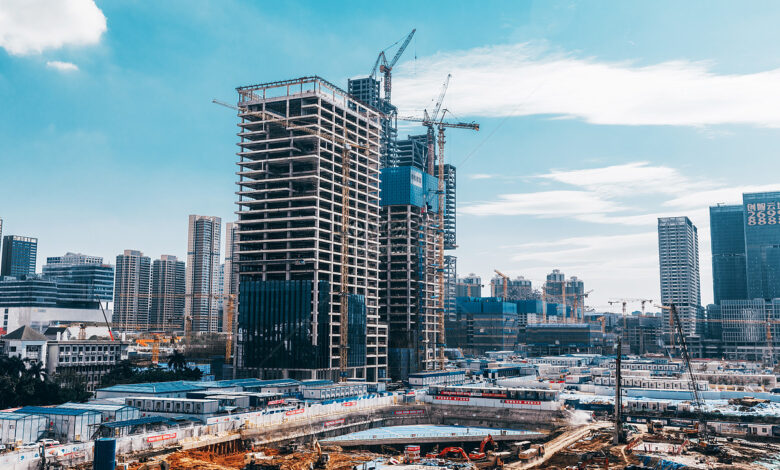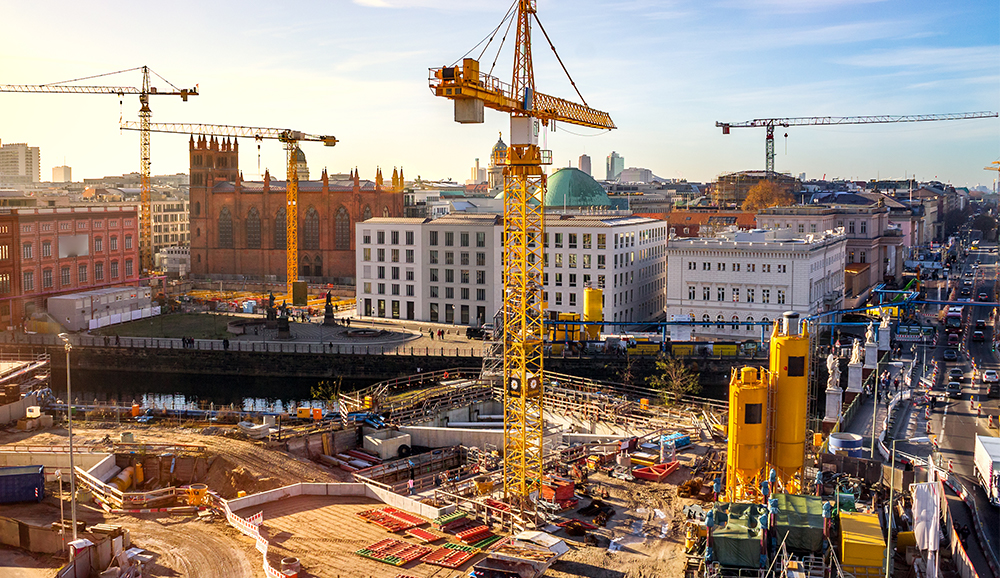Construction’s Future: Materials That Change Everything

The discipline of architecture and construction, fundamentally tasked with shaping the human habitat, is currently undergoing a massive and urgently needed transformation driven by the escalating demands of sustainability, efficiency, and resilience in the face of climate change.
For centuries, the building industry relied on a handful of core materials—timber, stone, brick, and eventually, steel and concrete—but these traditional resources now present serious environmental dilemmas, contributing significantly to global carbon emissions and waste generation.
With the construction sector responsible for a staggering portion of the world’s energy consumption and material extraction, the need for innovative, eco-conscious alternatives is no longer a choice but a critical global imperative for survival and continued development.
This pivotal moment has ignited a furious pace of research and development, shifting the focus towards next-generation construction materials that are lighter, stronger, smarter, and infinitely more sustainable than their predecessors, challenging the very definition of what a building can be.
These revolutionary materials—ranging from self-healing composites and engineered wood products to carbon-negative solutions and materials manufactured in zero-gravity—promise to not only drastically reduce construction’s environmental footprint but also allow architects to realize structural forms of unprecedented complexity and beauty.
Understanding these emerging technologies is essential for anyone involved in designing, building, or inhabiting the future world, as they are rapidly moving out of the laboratory and onto the construction site, promising an era of buildings that are truly regenerative.
The Great Material Shift: Why Change is Necessary

The reliance on conventional materials has created a looming ecological and logistical crisis that modern innovation must address head-on. Concrete and steel are powerful, but their costs are becoming unsustainable.
1. The Environmental Cost of Concrete
Concrete is the most consumed material in the world after water, yet its production carries a devastating environmental burden.
A. The key ingredient, Portland cement, is responsible for about 8% of global carbon dioxide emissions, a figure that is higher than the emissions of almost any single country except China and the United States.
B. This enormous footprint results from the energy-intensive process of heating limestone to high temperatures, releasing CO2 both from the burning fuel and the chemical reaction itself.
C. Concrete manufacturing also consumes massive quantities of water and aggregates (sand and gravel), stressing local ecosystems worldwide.
2. The Energy Demands of Steel
Steel is a foundational material for high-rise construction, but its energy cost is staggering.
A. Producing steel is an extremely energy-intensive process that requires massive amounts of coking coal or electricity for heating and smelting iron ore.
B. This manufacturing process contributes significantly to industrial greenhouse gas emissions.
C. While steel is highly recyclable, the initial production process often requires massive capital investment and generates hazardous byproducts.
3. The Need for Durability and Resilience
Traditional materials struggle to cope with the increasingly extreme weather events driven by climate change.
A. Modern materials must be designed for enhanced durability and resilience against severe floods, high winds, and rapid temperature swings.
B. They must withstand the test of time, reducing the frequency of costly repairs, demolition, and reconstruction.
C. The new goal is to create regenerative materials that can heal themselves or actively improve the environment around them.
Pillar One: Advanced Sustainable Composites
Research is focused on developing materials that mimic nature’s efficiency, offering self-repair capabilities and superior environmental performance.
1. Self-Healing Concrete
This breakthrough addresses one of concrete’s biggest flaws: its tendency to crack over time, allowing water and corrosive agents to penetrate the steel rebar, leading to structural decay.
A. Biological Healing Agents
- Researchers are integrating spores of non-pathogenic bacteria (often Bacillus species) and a nutrient source into the concrete mix.
- When a crack forms and water enters, the dormant bacteria activate, consume the nutrients, and produce limestone (calcite).
- This newly formed limestone autonomously fills the crack, restoring structural integrity and blocking the ingress of water.
B. Microencapsulated Polymers
- Another method involves embedding tiny, fragile microcapsules filled with healing agents (polymers or epoxy resin) into the concrete.
- When a crack propagates, the stress breaks the capsules, releasing the liquid agent into the crack where it quickly hardens, bonding the concrete back together.
- This process extends the lifespan of concrete structures significantly, reducing maintenance costs and replacement frequency.
2. Carbon-Negative and Geopolymer Cements
The most direct way to solve concrete’s emission problem is by changing the binder itself.
A. Geopolymer Cement
- This material replaces traditional Portland cement with industrial waste products, primarily fly ash and blast furnace slag.
- These materials react with alkaline solutions to create a binder that is often stronger, more durable, and more chemically resistant than traditional concrete.
- Crucially, the production process for geopolymer cement emits up to 80% less CO2 than the production of Portland cement.
B. Carbon-Negative Technology
- Innovative methods are being researched to capture CO2 during the concrete production process and sequester it directly into the curing material.
- This aims to create a true carbon sink, where the resulting concrete removes more carbon dioxide from the atmosphere than its production emitted.
- The final product, often involving mineral carbonation processes, is not just carbon-neutral but genuinely carbon-negative.
Pillar Two: Mass Timber and Engineered Wood
Wood is a centuries-old material, but modern engineering has transformed it into a high-performance structural solution that can compete with steel and concrete in large-scale construction.
1. Cross-Laminated Timber (CLT)
CLT is the most disruptive innovation in structural wood, allowing for the construction of tall, large-span wooden buildings.
A. Structural Composition
- CLT panels are made by gluing together layers of dimensioned lumber in alternating perpendicular directions.
- This cross-laminating technique gives the resulting panels exceptional structural rigidity, dimensional stability, and strength comparable to concrete.
- CLT can be prefabricated off-site, speeding up construction and reducing on-site waste.
B. Sustainability and Fire Performance
- Wood is a renewable resource that naturally sequesters carbon dioxide from the atmosphere during its growth.
- When correctly engineered, CLT structures have an impressive fire resistance, as the thick material chars on the exterior, insulating the core and maintaining structural integrity longer than unprotected steel.
- Building with CLT creates lighter structures, requiring less massive foundations and leading to lower transportation emissions.
2. Glued Laminated Timber (Glulam)
Glulam involves bonding together smaller pieces of wood into large, complex structural members.
- Glulam allows architects to create long-span beams and elegant curved shapes that are impossible to achieve with single-piece timber.
- It uses forest resources more efficiently by incorporating smaller, fast-growing trees.
- Glulam is often utilized for visually striking architectural elements, such as the curved roofs of sports arenas and large public halls.
Pillar Three: Smart, Adaptive, and Digital Materials

The future of construction includes materials that are not merely structural, but are intelligent, adaptive, and seamlessly integrated with digital systems.
1. Smart Dynamic Glass (Electrochromic)
This material allows windows to change their tint in response to electrical voltage or environmental sensors, optimizing light and heat.
A. Adaptive Shading
- Electrochromic glass allows buildings to instantly and automatically adjust the amount of solar heat and glare entering the interior.
- This dynamic shading reduces the need for constant air conditioning and artificial lighting, resulting in substantial energy savings.
- It provides occupants with superior comfort and control over their environment without blocking their view with physical blinds.
2. Self-Cleaning and Photo-Catalytic Materials
Materials are being developed that actively interact with the environment to clean themselves and improve air quality.
A. Titanium Dioxide Coatings
- Surface coatings containing titanium dioxide (TiO2) are applied to facades, pavement, and roofing materials.
- When exposed to sunlight and moisture, the TiO2 acts as a photo-catalyst, breaking down pollutants (like nitrogen oxides) and organic dirt particles.
- The result is a self-cleaning building surface that actively reduces smog and improves local air quality.
3. Materials for Digital Fabrication
The rise of robotic construction demands materials designed specifically for additive manufacturing and automation.
A. Customizable 3D-Printing Mixes
- Specialized concrete, polymer, and composite mixes are engineered to maintain viscosity and cure speed for large-scale 3D construction printers.
- These mixes allow for the rapid creation of complex, non-standard wall structures and shapes with minimal formwork or material waste.
- The digital design process allows for optimization, placing material only where it is structurally required.
The Path Forward: Research and Implementation
The transition to a sustainable material economy requires a concerted effort from researchers, industry, and regulators.
1. Driving Research and Development
Continued progress requires solving the remaining technical hurdles and scaling up new manufacturing processes.
A. Quantum Material Science
Utilizing quantum computing to accurately model and design new materials at the atomic level, optimizing for strength and durability.
B. Bio-Manufacturing
Developing new methods for growing materials (such as mycelium-based insulation) using biological processes, offering a truly renewable alternative.
C. Recycling Infrastructure
Building the necessary industrial infrastructure to efficiently process and recycle construction and demolition waste back into usable, high-quality material streams.
2. Policy and Market Adoption
New materials must be embraced by the market to achieve mass adoption and lower costs.
A. Updating Building Codes
Regulators must adapt outdated building codes and standards to safely allow and certify the use of revolutionary new materials like CLT and geopolymer cement.
B. Incentivizing Low-Carbon Choices
Governments can offer tax credits or expedited permitting for projects that demonstrably utilize materials with low embodied carbon footprints.
C. Transparency and Certification
Standardized labeling (like the Declare Label) must provide clear, verified information on a material’s embodied energy, sourcing, and chemical content, empowering architects and consumers to make informed choices.
Conclusion: Engineering a Sustainable Future
The challenge of climate change is driving the most exciting and essential material innovations in construction history.
Self-healing concrete and geopolymer cements offer revolutionary solutions to the massive carbon footprint of traditional building practices.
Mass timber, particularly CLT, provides a renewable, carbon-sequestering alternative to steel and concrete for high-density structures.
Smart materials like electrochromic glass adapt dynamically to environmental conditions, drastically reducing operational energy demands.
Digital fabrication and robotic construction methods rely on materials engineered for precision, speed, and minimal waste.
The integration of these next-generation materials is foundational to creating buildings that are truly sustainable, resilient, and enduring.


